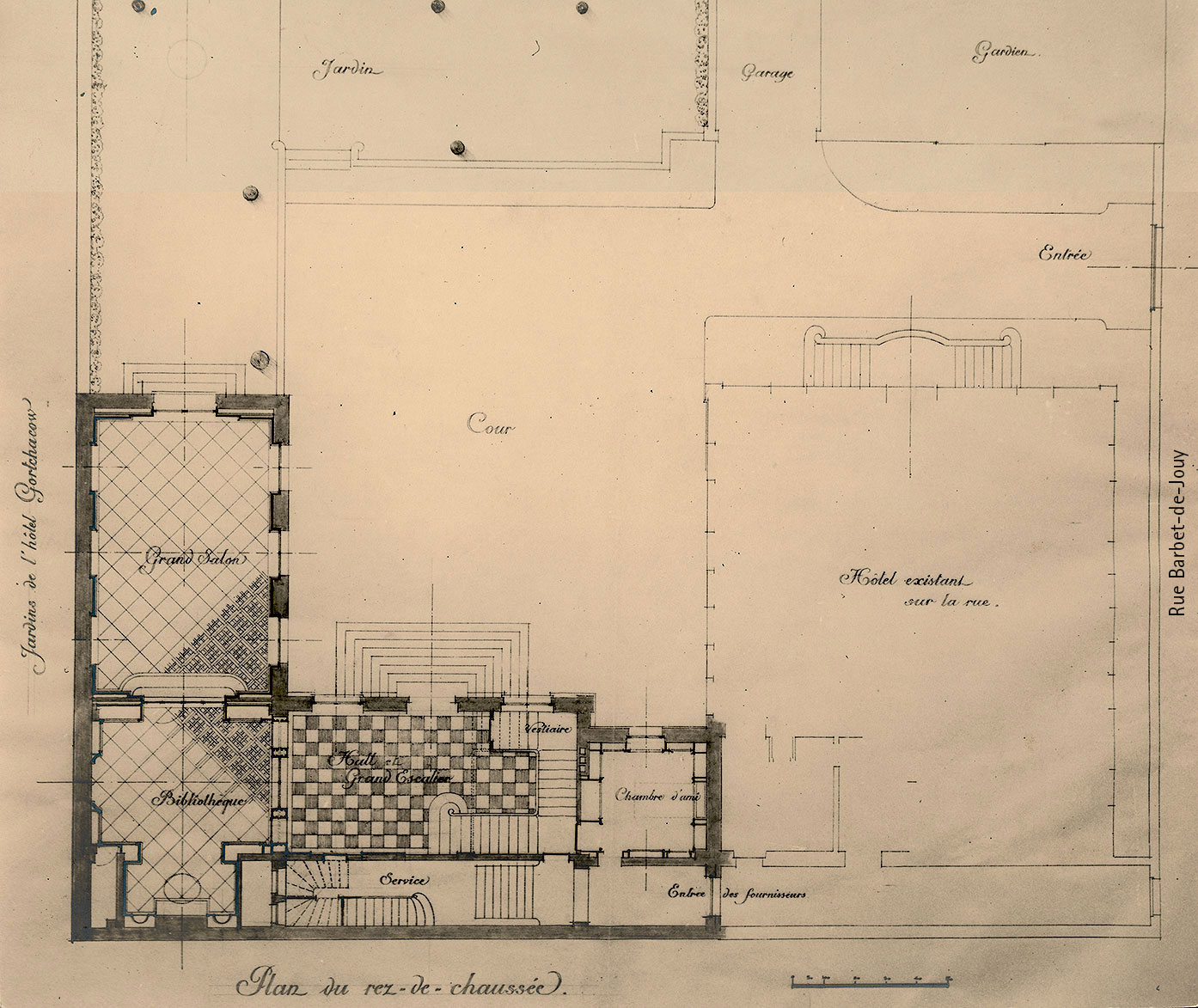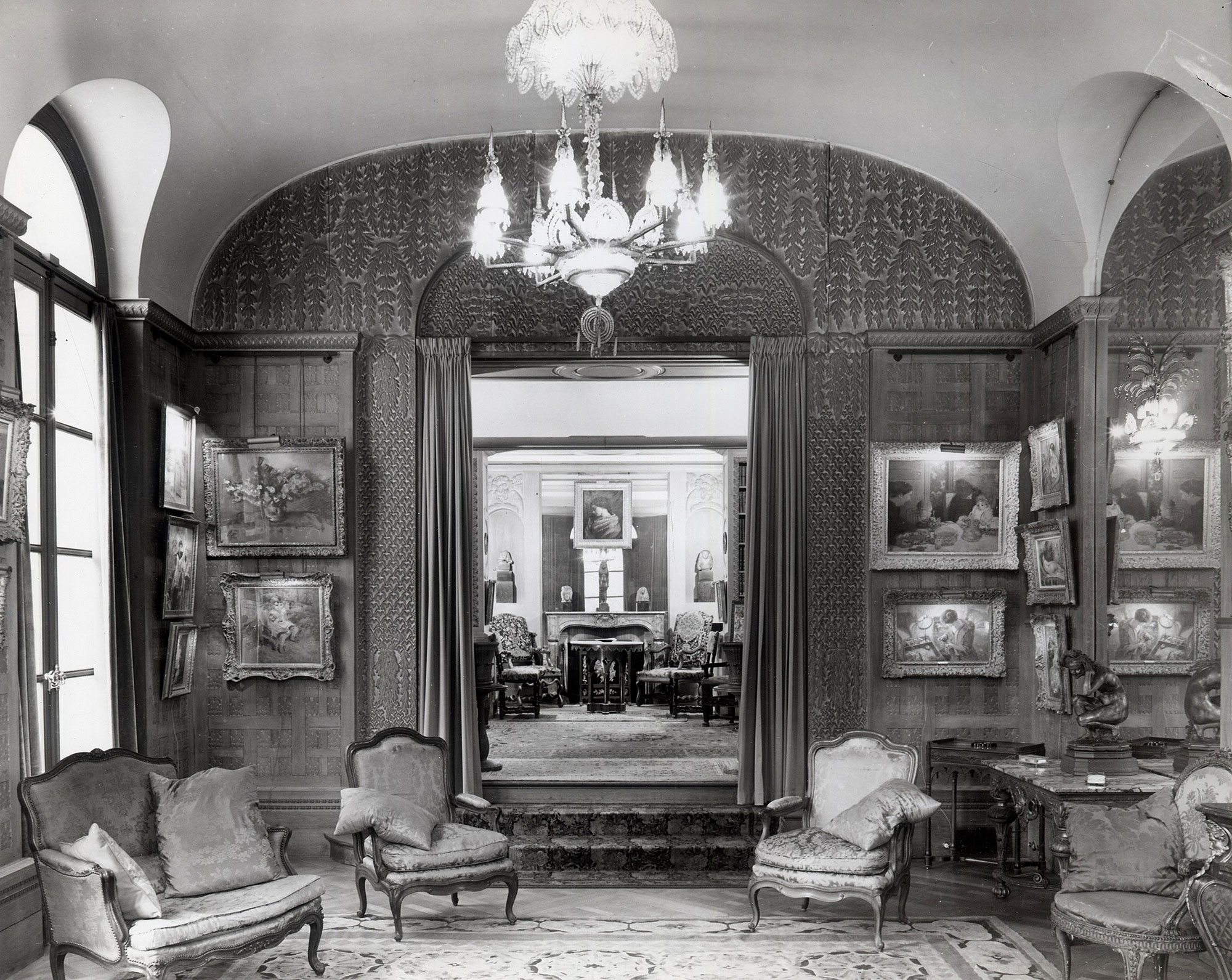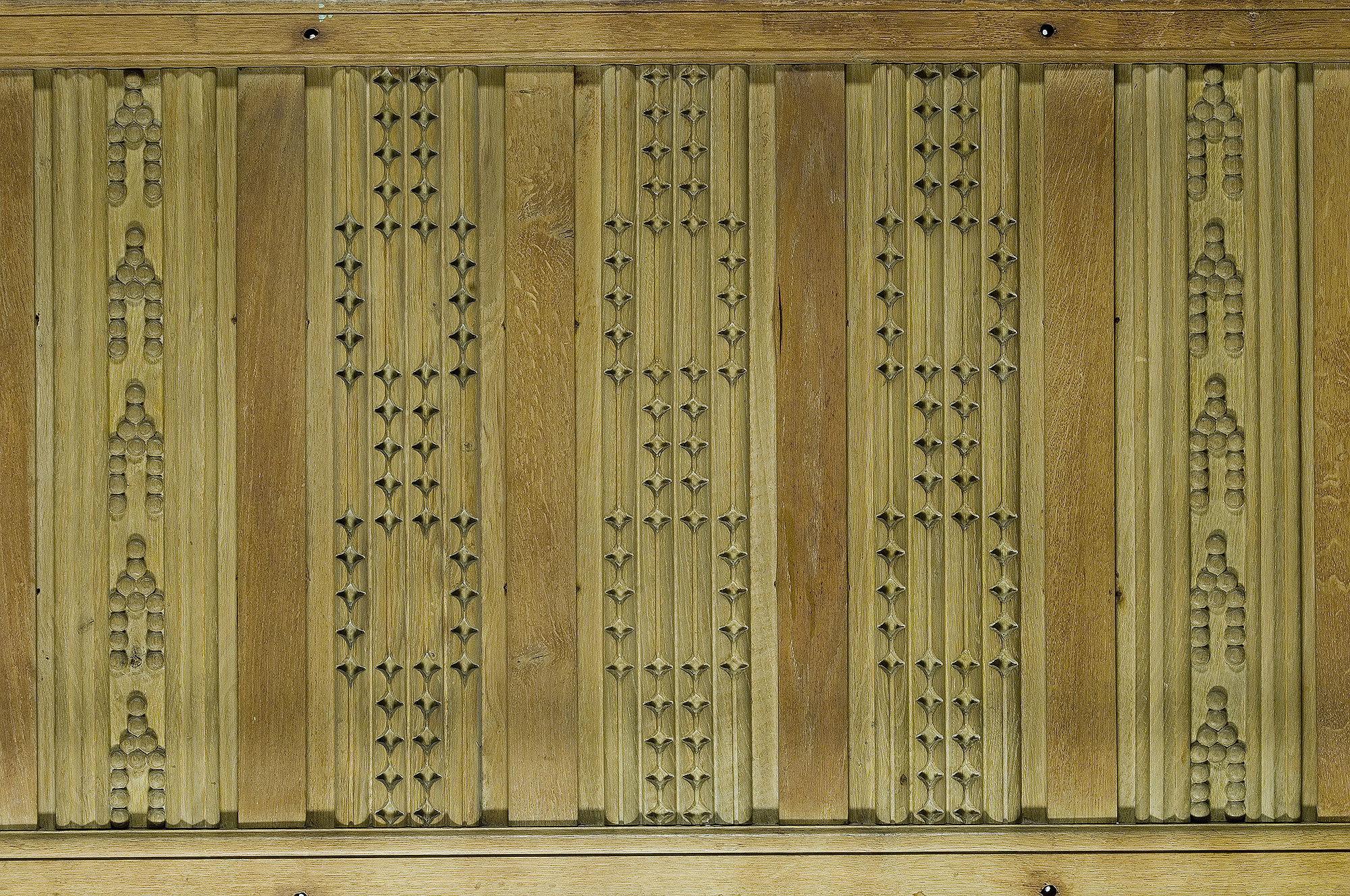


If you want to use this picture, please contact our library
In 1920 Jeanne Lanvin bought the former mansion of Marquise Arconati-Visconti at 16 rue Barbet-de-Jouy in Paris’s 7th arrondissement. Few alterations were made to the building itself, built in the 19th century in the Palladian style, except for the creation of a dining room in 1921-1922, decorated by the interior designer Armand Albert Rateau, with whom Jeanne Lanvin had just created the firm Lanvin Décoration. The couturière decided to not live in the mansion itself, which became the home of her daughter Marguerite and her son-in-law, Comte Jean de Polignac. As the building was being refurbished, she built a new, adjoining wing to house her own residence on the site of the mansion’s outbuildings from 1921 to 1925, designed by the architects Richard Bouwens van der Boijen and Maurice Boutterin. She entrusted the interior decoration and furnishing to Armand Albert Rateau.
Vue de la nouvelle aile, côté cour, réalisée par les architectes Richard Bouwens van der Bijen, Maurice Boutterin et avec la collaboration de Robert Fournez et Armand Albert Rateau.
Le permis de construire a été délivré le 13 novembre 1920.

Two of the extension’s three storeys housed Jeanne Lanvin’s reception rooms. The ground floor, where she gave parties and balls and staged fashion shows, comprised a vast hall and the main staircase, opening on to a study-library leading to a large drawing room. There was also a small guest’s room, later converted into the couturière’s office with display cases for her collection of objects. On the first floor, reserved for close acquaintances, the dining room opened on to a terrace. Only the family’s inner circle had access to Jeanne Lanvin’s private rooms on the second floor, comprising her bathroom, bedroom and boudoir opening on to a terrace. The bathroom was the first to be completed in 1924, followed by the bedroom and boudoir in 1925. Jeanne Lanvin lived there until she died in 1946.
A gauche, escalier menant à la chambre d’ami transformée par la suite en bureau.
Rambarde de l’escalier en panneaux de chêne sculptés de marguerites stylisées, référence au prénom de la fille de Jeanne Lanvin
En bas, au fond, la bibliothèque.

Les murs sont décorés en pendant de deux paravents en laque de Rateau,. Celui disposé côté cour pouvait être déplié automatiquement afin d’occulter la porte-fenêtre donnant sur la terrasse.
La table à piètement de pierre et dessus de marbre pouvait accueillir une dizaine de convives. Les angles arrondis du fond de la pièce abritent deux niches, placées de part et d’autre d’un miroir et sur lesquelles sont posés deux vases en cuivre de Jean Dunand. Au-dessus du miroir, une tringle permet de suspendre un rideau de perles de verre sur fils métalliques
Les deux paravents, la paire de vases, et le rideau font partie des collections du musée des Arts décoratifs, inv. 39952 A et B, 39953 A et B et 39911
ARMAND-ALBERT RATEAU (1882-1938)
Paris, vers 1921-1922
bois laqué, métal
JEAN DUNAND
(1877-1942)
Paris, vers 1921-1922
cuivre martelé, décor incrusté, doré et patiné
ARMAND-ALBERT RATEAU (1882-1938)
Paris, vers 1921-1922
bois laqué, métal
Le lustre en tissu situé sur le palier du 1er étage fait partie des collections du musée des Arts décoratifs, inv. 39920.
ARMAND-ALBERT RATEAU
Paris, vers 1921-1922
graphite, craie sur papier calque
don FRANCOIS RATEAU, 1995
